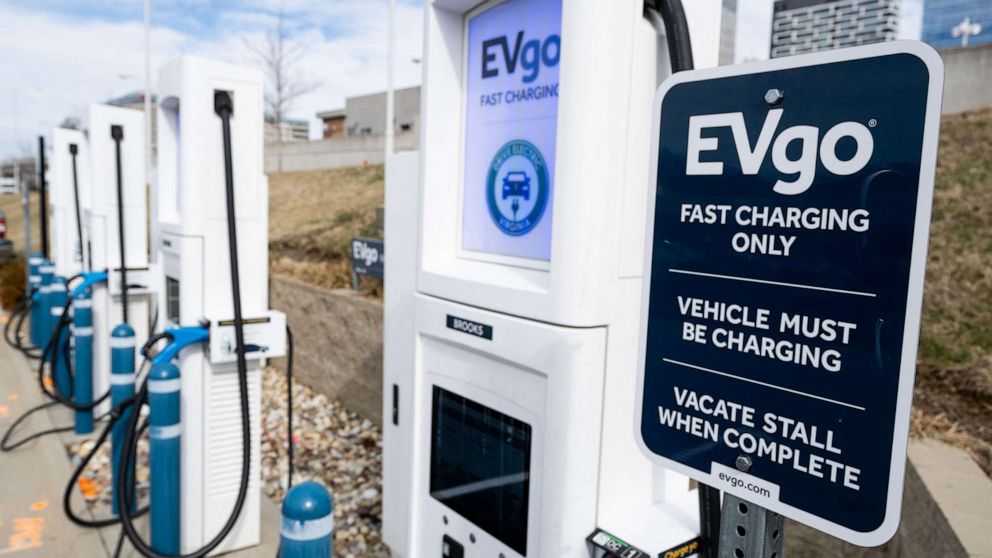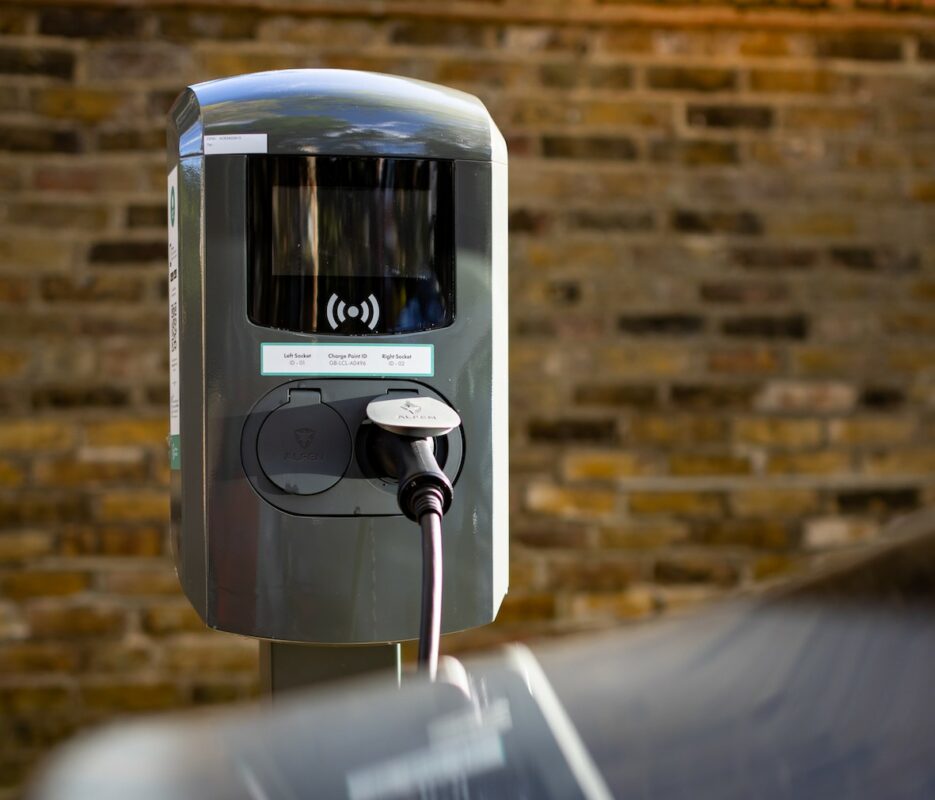What’s Driving the Growth of EV Infrastructure? Buy EV Charging news for Key Updates
Leading EV Charging Information: Key Updates on Facilities and Technology

Current Advancements in Fast-Charging Innovation

Additionally, advancements in battery innovation, consisting of enhanced thermal monitoring systems and higher power thickness batteries, complement fast-charging capacities. These developments alleviate the threat of battery degradation throughout quick charging, guaranteeing long life and performance for EV owners.
Furthermore, the assimilation of smart charging remedies is enhancing individual experience, allowing real-time surveillance and dynamic prices versions. EV Charging news. This flexibility enables vehicle drivers to optimize charging times and expenses based upon grid need
As automakers remain to buy fast-charging networks, the partnership in between sector stakeholders is crucial. Partnerships between charging terminal carriers and automotive producers are leading the way for substantial insurance coverage, inevitably cultivating an extra durable EV ecosystem. These advancements are critical in supporting the transition to sustainable transportation.
Government Initiatives for Charging Expansion
Federal government campaigns play a critical duty in the development of electrical lorry (EV) billing facilities, assisting in the shift to sustainable transportation. Various government and state programs are being applied to boost billing ease of access, decrease the financial burden on customers, and advertise the adoption of electric vehicles.
Especially, the united state government has alloted substantial funding through the Framework Financial Investment and Jobs Act, which earmarks $7.5 billion for EV billing network development throughout the nation. This funding is intended at releasing thousands of new billing stations, particularly in underserved locations, thus dealing with array stress and anxiety among possible EV purchasers.
Additionally, countless states are passing legislation to simplify the permitting process for billing station setups, which is important for accelerating implementation. Incentives such as tax obligation credit reports and rebates for both customers and companies are additionally being introduced to urge the installation of billing infrastructure.
Moreover, public-private partnerships are progressively becoming an emphasis, leveraging exclusive investment to match government funding. These campaigns underscore a collective approach necessary for building a efficient and detailed EV billing network, ultimately adding to a greener and even more lasting future.
Innovative Battery Solutions Enhancing Effectiveness
Changing the landscape of electric car (EV) modern technology, cutting-edge battery services are substantially boosting efficiency and performance. Advancements in battery chemistry, specifically with lithium-sulfur and solid-state batteries, are bring about increased energy density, which enables for longer arrays and faster billing times. These brand-new battery kinds have the potential to exceed standard lithium-ion batteries by supplying greater abilities while reducing weight, thereby improving overall car effectiveness.
Additionally, advancements in battery administration systems (BMS) are enhancing power use and prolonging battery life expectancy. Intelligent algorithms keep track of battery health and wellness and performance, enabling real-time adjustments to charging and releasing procedures. This not just improves the effectiveness of the battery however likewise guarantees a more dependable and sustainable power resource for EVs.
In addition, the assimilation of reusing innovations is dealing with the environmental impact of battery manufacturing and disposal. Advancements in second-life applications for EV batteries are facilitating their use in power storage space systems, adding to a round economic situation.
As these ingenious battery services continue to advance, they assure to transform the EV market, making electric lorries a lot more enticing and easily accessible to a broader target market while supporting global sustainability objectives.

Collaboration Between Automakers and Charging Networks
Acknowledging the important demand for a durable billing framework, automakers are significantly working together with billing network carriers to boost the EV possession experience (EV Charging news). These collaborations intend to develop a smooth billing ecological community that profits customers and sustains the shift to electric cars
Major automobile brands are joining pressures with established billing networks to increase their billing station protection, guaranteeing chauffeurs have access to convenient and reliable billing choices. For instance, partnerships with networks like ChargePoint and Electrify America permit car manufacturers to integrate charging remedies straight into their vehicles' navigating systems, assisting individuals to the nearest terminals and supplying real-time accessibility updates.
Moreover, these collaborations usually lead to the development of fast-charging modern read more technologies that considerably reduce the moment needed to charge an EV. By pooling sources and proficiency, car manufacturers and charging networks can introduce faster, producing solutions that satisfy the expanding need for electric flexibility.
Additionally, joint efforts might likewise bring about more standardized billing methods, which can alleviate customer confusion and advertise wider EV adoption. On the whole, these calculated partnerships are pivotal in constructing a effective and user-friendly charging framework that fulfills the demands of an expanding electric car market.
Difficulties Dealing With EV Billing Facilities
As the electrical car market remains to expand, numerous challenges are appearing that impede YOURURL.com the advancement of a thorough charging infrastructure. One of the primary obstacles is the inadequate number of charging stations, especially in country and underserved city areas. This void produces array anxiety among potential EV buyers, discouraging them from making the switch.
Additionally, the lack of standardization accountable innovation complicates the facilities landscape. Variants in plug types and billing rates can develop complication for individuals and raise operational intricacies for charging network operators. Additionally, the assimilation of billing stations right into existing electric grids presents substantial challenges. Lots of areas deal with capacity constraints, needing significant financial investments in grid upgrades to fit increased demand.
One more pushing problem is the high price linked with the setup and maintenance of charging stations, which can be an obstacle for both public entities and private services. Finally, governing hurdles and zoning constraints can delay the release of billing facilities, hampering progression in increasing crucial services. Dealing with these difficulties will be critical for fostering a durable EV community that sustains the change to lasting transport.
Verdict
Finally, the ongoing innovations in EV billing technology, supported by considerable government efforts and innovative battery solutions, are essential for the growth and performance of electrical automobile framework. Cooperations between automakers and billing carriers better boost terminal her response protection, attending to the growing need for easily accessible billing alternatives. Regardless of difficulties that persist within the EV billing landscape, these growths represent a positive trajectory towards an extra lasting and efficient electrical lorry environment.
Technologies in charging framework have actually led to the development of ultra-fast chargers capable of delivering up to 350 kW of power, significantly reducing charging times. Variants in plug kinds and charging rates can create complication for individuals and increase operational intricacies for billing network operators.In final thought, the recurring developments in EV charging innovation, sustained by substantial federal government campaigns and cutting-edge battery services, are essential for the development and performance of electric automobile infrastructure. Cooperations in between car manufacturers and billing companies further enhance station insurance coverage, addressing the expanding need for obtainable billing alternatives. Regardless of difficulties that persist within the EV charging landscape, these advancements represent a positive trajectory towards a more reliable and sustainable electrical lorry community.